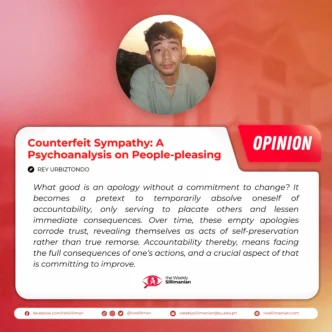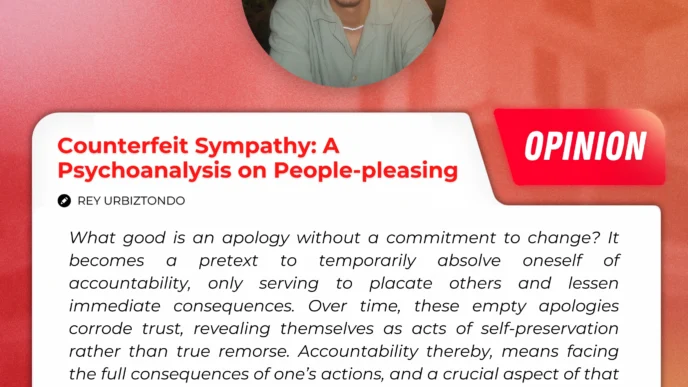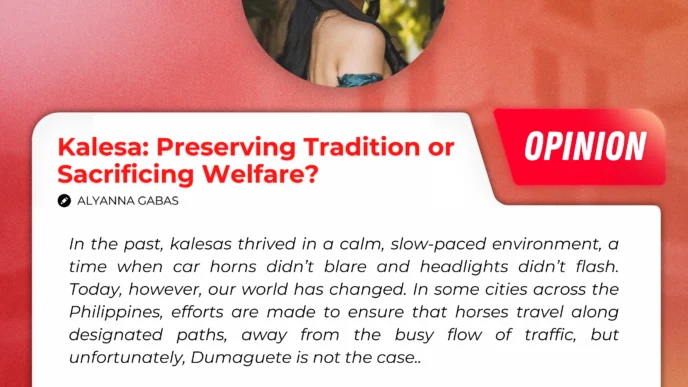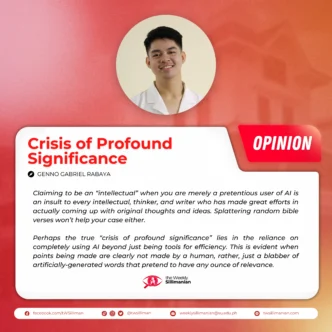By Niña Ramona T. Teves
Every time heavy rains pour and flood warnings spread, it is not unusual to hear students half-jokingly ask, “Suspended na?” While this may sound insensitive given that class suspensions are primarily for safety reasons—especially for those affected by floods and difficult commutes—the truth is that this reaction reveals something deeper. For many students, the possibility of a suspension means an unexpected break, a pause from the endless cycle of academic demands.
At first glance, this may seem controversial. After all, isn’t school meant to prepare us for the future? Shouldn’t students be grateful for education instead of celebrating interruptions? But beneath the laughter and memes lies a pressing issue: students rarely get the wellness breaks they so desperately need. Aside from the standard lunch period, most students spend over 12 hours in academic spaces—attending classes, doing homework, reviewing for exams, and fulfilling extracurricular obligations. For many, the 24 hours in a day feel insufficient to balance school, rest, and personal life.
This is why suspensions, although caused by unfortunate weather, become a form of relief. They represent a pause button in a schedule that never seems to stop. They give students time to breathe, to catch up on sleep, or to simply exist without the constant pressure of deadlines and recitations. When students cheer for suspensions, it should not be dismissed as laziness or entitlement. Rather, it should be recognized as a collective cry for rest and balance.
The timing of suspension announcements also adds another layer to this issue. More often than not, cancellations come late in the morning or even in the middle of the day—long after many students have already braved the rain, floods, and traffic to reach their campus. This is especially unfair for those who live far away or rely on public transportation. By the time they learn of the suspension, they have already spent hours traveling in unsafe conditions, rendering the decision almost useless to them. Such situations only emphasize the need for proactive measures—not just for safety but also for students’ well-being.
It is also worth noting that while students here often endure schedules that stretch from 7 a.m. to 7 p.m., schools in other countries take a different approach. In places like Finland, Japan, and France, the typical school day ends as early as 3 or 4 in the afternoon. Despite the shorter hours, their education systems are among the most respected in the world, producing graduates who go on to excel in top universities such as Oxford, Cambridge, Harvard, and the University of Tokyo. These examples prove that longer school days do not automatically translate to better learning outcomes. Instead, balance and efficiency in teaching play a more important role.
The attitude of wishing for suspensions reveals a system that does not provide enough mental wellness breaks. If a single canceled school day excites students more than their regular schedule, then perhaps the system is due for reflection. Schools should consider intentionally integrating wellness breaks into the academic calendar—short pauses that allow students to recharge, not just physically but also mentally. After all, education should not be about pushing students until they break, but about helping them grow in ways that are sustainable.
So the next time we hear students asking “Suspended na?”, maybe it is worth asking another question in return: Do students really need a storm just to earn a break?












